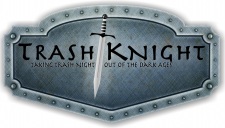Monthly Archives: May 2012
Solar Powered Boat Made of Trash
The Polli-Boat
As Reuters reports, the main flotation system of the Polli-Boat is constructed out of 804 of the bricks made of recycled plastic bottles and strengthened with PET (though Miniwiz states that number is 760). Old ad banners form the sails. And when there isn’t enough wind to travel, six 72-watt soft solar panels are busy harvesting enough energy to power the electric motor.
Miniwiz states on its website, “POLLI BOAT is the world’s first trimaran inspired by the 3R practices-Reduce, Reuse, and Recycle. Designed and engineered by Miniwiz S.E.D., Polli-Boat is made of recycled materials including the revolutionary POLLI-BRICKS™ and a newly developed green material WPC (wood-plastic composite). The boat uses waste canvas as decking and its renewable energy systems powered by both solar and wind, can be interchangeable depending on weather conditions. Seven hundred and sixty POLLI-BRICKS™ are used as the major floating device in the main hull and outer tubes due to POLLI-BRICKS™ large air pockets. WPC is used as the top decking material to replace traditional FRP (Fiber Reinforced Plastic); which is unrecyclable and toxic during the manufacturing process.”
Click the link below to see video.
23 Foot Boat Made of Trash Runs on Solar Power
See more projects using solar energy HERE.
Related articles
- Re-Case: 100% Trash Made iPhone Case (bgreenlifestyle.com)
- Ozone Restaurant: Bowling themed restaurant crafted out of recycled wood (mybigearth.com)
- Plastic trash for concrete blocks (plasticisrubbish.wordpress.com)
A Timeline of Trash
An interesting perspective of trash, the disposal process and the future of trash. Trash Knight encourages you to dispose of trash, recyclables and compost items accordingly.
| Date | Location | Notes |
|---|---|---|
| 6,500 BC | North America | Archeological studies shows a clan of Native Americans in what is now Colorado produced an average of 5.3 pounds of waste a day. |
| 500 BC | Athens Greece | First municipal dump in western world organized. Regulations required waste to be dumped at least a mile from the city limits. |
| New Testament of Bible | Jerusalem Palestine | The Valley of Gehenna also called Sheoal in the New Testament of the Bible “Though I descent into Sheol, thou art there.” Sheoal was apparently a dump outside of the city of that periodically burned. It became synonymous with “hell.” |
| 1388 | England | English Parliament bars waste dispersal in public waterways and ditches. |
| 1400 | Paris France | Garbage piles so high outside of Paris gates that it interferes with city defense. |
| 1690 | Philadelphia | Rittenhouse Mill, Philadelphia makes paper from recycled fibers (waste paper and rags). |
| 1842 | England | A report links disease to filthy environmental conditions – “age of sanitation” begins. |
| 1874 | Nottingham England | A new technology called “the Destructor” provided the first systematic incineration of refuse in Nottingham, England. Until this time, much of the burning was accidental, a result of methane production. |
| 1885 | Governor’s Island NY | The first garbage incinerator was built in USA (on Governor’s Island in NY) |
| 1889 | Washington DC | Washington DC reported that we were running out of appropriate places for refuse (sound familiar?). |
| 1896 | United States | Waste reduction plants arrive in US. (for compressing organic wastes). Later closed because of noxious emissions. |
| 1898 | New York | NY has first rubbish sorting plant for recycling (are we reinventing the wheel?). |
| Turn of Century | By the turn of the century the garbage problem was seen as one of the greatest problems for local authorities. | |
| 1900 | “Piggeries” were developed to eat fresh or cooked garbage (In the mid-50’s an outbreak of vesicluar exenthama resulted in the destruction of 1,000s of pigs that had eaten raw garbage. Law passed requiring that garbage had to be cooked before it could be fed to swine). | |
| 1911 | New York City | NYC citizens were producing 4.6 pounds of refuse a day (remember the Native Americans from 6500 BC mentioned above?). |
| 1914 | United States | there were about 300 incinerators in the US for burning trash. |
| 1920’s | Landfills were becoming a popular way of reclaiming swamp land while getting rid of trash. | |
| 1954 | Olympia Washington | Olympia Washington pays for return of aluminum cans. |
| 1965 | United States | The first federal solid waste management laws were enacted. |
| 1968 | By 1968 companies began buy back recycling of containers. | |
| 1970 | United States | The first Earth Day was celebrated, the Environmental Protection Agency EPA created and the Resource Recovery Act enacted. |
| 1976 | United States | In 1976 Resource Conservation and Recovery Act (RCRA) was created emphasizing recycling and HW management. This was the result of two major events: the oil embargo and the discovery (or recognition) of Love Canal. |
| 1979 | United States | The EPA issued criteria prohibiting open dumping. |
| Today | The list goes on and on. |
Related articles
- Following Garbage’s Long Journey Around The Earth (wnyc.org)
- Professional cleanout services We Can Remove the Clutter from Your Life (junkguysaustin.wordpress.com)
- How to “Green” Your Garbage in Nine Easy Steps (socyberty.com)



